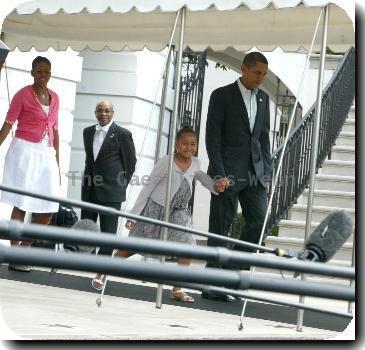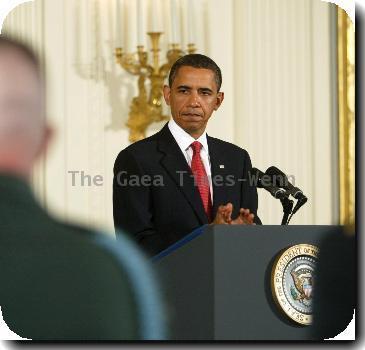In high court’s big cases, it’s 4 liberals vs 4 conservatives; takes Justice Kennedy to make 5
By Mark Sherman, APSaturday, January 23, 2010
5-4 split is the rule in high court’s big cases
WASHINGTON — It comes down to this at the Supreme Court: If you’ve got Justice Anthony Kennedy on your side, you can pretty much do what you want. Without him, you’re the author of an angry dissent.
Thursday’s decision to strike down restrictions on corporate campaign spending more than 60 years old was the third time in nine days that the court divided 5-4, with liberals on one side and conservatives on the other. The other cases involved an appeal from a death row inmate in Georgia and the prospect of broadcasting a gay marriage trial in California.
As in dozens of earlier cases, Kennedy was in the majority each time. He was the author of the campaign finance decision.
The rulings demonstrate the extent to which ideology — not fidelity to precedent or a particular interpretation of the Constitution — is the driving force on the court.
The addition of Justice Sonia Sotomayor, replacing Justice David Souter, seems to have changed nothing in this regard. Indeed, it would have been shocking if President Barack Obama’s first high court nominee immediately began to line up with the court’s conservatives.
The Bush administration officials who helped in the confirmation of Chief Justice John Roberts and Justice Samuel Alito would have been equally dismayed if President George W. Bush’s two selections had not become reliable voting allies of conservative justices Antonin Scalia and Clarence Thomas.
The campaign finance case was different only in that Kennedy’s vote was not seen as being up for grabs. His views had been known for some time, expressed in two dissents from earlier opinions that were overruled Thursday.
Roberts and particularly Alito provided the crucial votes. Alito took the place of Justice Sandra Day O’Connor, who had voted to uphold the rules that the court jettisoned Thursday.
Because Kennedy was a near-certain vote to overturn one opinion in its entirety and a portion of the other, critics of the ruling focused on Roberts as the leader of the court and an advocate for a restrained approach to changing the law.
As soon as the opinion was released Thursday — indeed, even within Justice John Paul Stevens’ lengthy dissent itself — predictable cries of “judicial activism” arose from its critics.
The court could have taken smaller steps rather than reverse Congress’ 100-year trend to separate corporate money and politics, Stevens said.
“There were principled, narrower paths that a court that was serious about judicial restraint could have taken,” Stevens said in an opinion that Justices Stephen Breyer, Ruth Bader Ginsburg and Sotomayor joined.
But how can it be activist, the majority asked, to stand up for First Amendment rights?
Roberts also had a ready response in his concurring opinion to the charge that he had abandoned his minimalist approach. “There is a difference between judicial restraint and judicial abdication,” he said.
Both sides agree, he said, that some high court decisions turn out to be so wrong that they deserve to be overruled. He gave three examples that he could confidently predict his critics would embrace.
If the court could not revisit earlier rulings, Roberts said, “segregation would be legal, minimum wage laws would be unconstitutional and the government could wiretap ordinary criminal suspects without first obtaining warrants.”
In earlier times, the chief justice might have worked hard for unanimity in a ruling as potentially transformative as the campaign spending decision appears to be. Chief Justice Earl Warren assiduously courted Justice Stanley Reed of Kentucky to ensure that there would be no dissent — much less from a Southerner — to the Brown v. Board of Education decision that outlawed segregation in public schools.
Such unanimity is unthinkable on the big issues of the day on the current court, but ideology was not then the order of the day in selecting justices.
Even at the time of Roe v. Wade in 1973, decided 37 years minus one day before the campaign finance case, seven justices formed the majority that declared a woman has a constitutional right to an abortion. Of those seven, five were appointed by Republican presidents, including three by Richard Nixon.
The two dissenters were Justices Byron White, named to the bench by John F. Kennedy, and William Rehnquist, another Nixon appointee.
Roe v. Wade is the prime example put forward by conservatives of a judicial power grab, taking away from the states the power to decide for themselves what limits to put on abortion.
But the reaction to Roe and the liberal outcry that followed Thursday’s decision show that there is one salient feature of accusations of judicial activism. They come from the losing side.
On the Net:
Supreme Court: www.supremecourtus.gov/
Tags: Barack Obama, Campaigns, Judicial Appointments And Nominations, North America, United States, Washington

